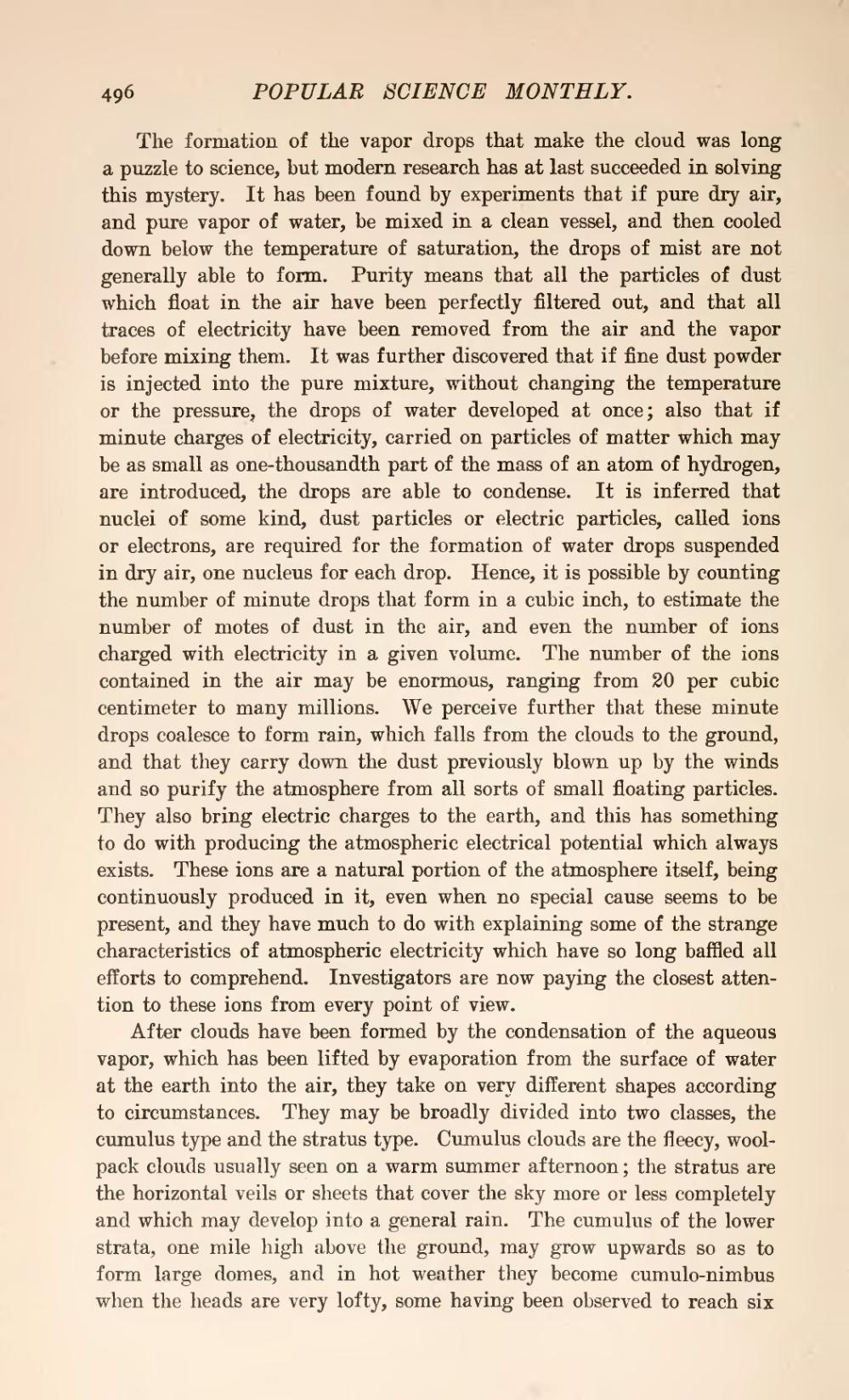The formation of the vapor drops that make the cloud was long a puzzle to science, but modern research has at last succeeded in solving this mystery. It has been found by experiments that if pure dry air, and pure vapor of water, be mixed in a clean vessel, and then cooled down below the temperature of saturation, the drops of mist are not generally able to form. Purity means that all the particles of dust which float in the air have been perfectly filtered out, and that all traces of electricity have been removed from the air and the vapor before mixing them. It was further discovered that if fine dust powder is injected into the pure mixture, without changing the temperature or the pressure, the drops of water developed at once; also that if minute charges of electricity, carried on particles of matter which may be as small as one-thousandth part of the mass of an atom of hydrogen, are introduced, the drops are able to condense. It is inferred that nuclei of some kind, dust particles or electric particles, called ions or electrons, are required for the formation of water drops suspended in dry air, one nucleus for each drop. Hence, it is possible by counting the number of minute drops that form in a cubic inch, to estimate the number of motes of dust in the air, and even the number of ions charged with electricity in a given volume. The number of the ions contained in the air may be enormous, ranging from 20 per cubic centimeter to many millions. We perceive further that these minute drops coalesce to form rain, which falls from the clouds to the ground, and that they carry down the dust previously blown up by the winds and so purify the atmosphere from all sorts of small floating particles. They also bring electric charges to the earth, and this has something to do with producing the atmospheric electrical potential which always exists. These ions are a natural portion of the atmosphere itself, being continuously produced in it, even when no special cause seems to be present, and they have much to do with explaining some of the strange characteristics of atmospheric electricity which have so long baffled all efforts to comprehend. Investigators are now paying the closest attention to these ions from every point of view.
After clouds have been formed by the condensation of the aqueous vapor, which has been lifted by evaporation from the surface of water at the earth into the air, they take on very different shapes according to circumstances. They may be broadly divided into two classes, the cumulus type and the stratus type. Cumulus clouds are the fleecy, woolpack clouds usually seen on a warm summer afternoon; the stratus are the horizontal veils or sheets that cover the sky more or less completely and which may develop into a general rain. The cumulus of the lower strata, one mile high above the ground, may grow upwards so as to form large domes, and in hot weather they become cumulo-nimbus when the heads are very lofty, some having been observed to reach six
